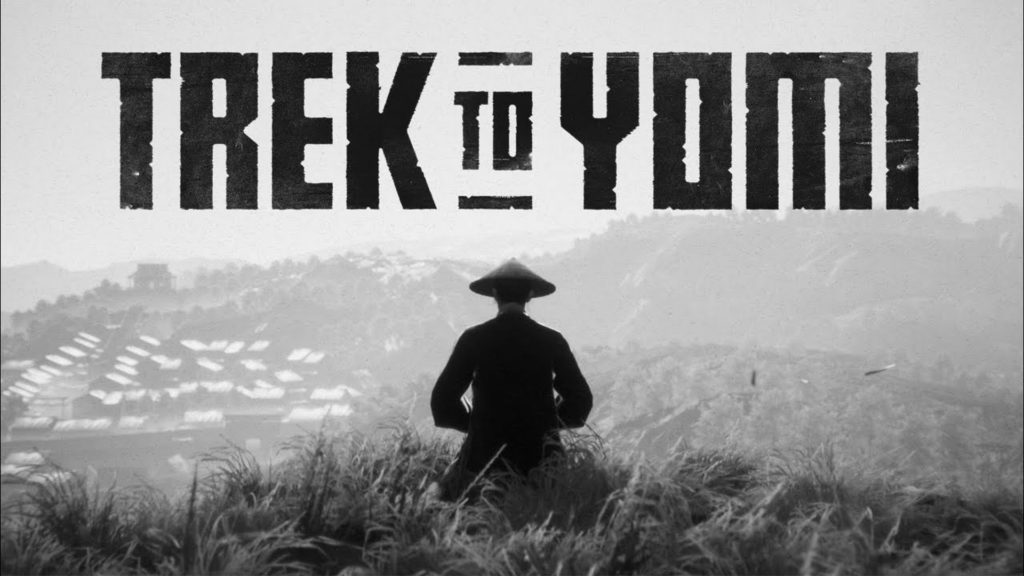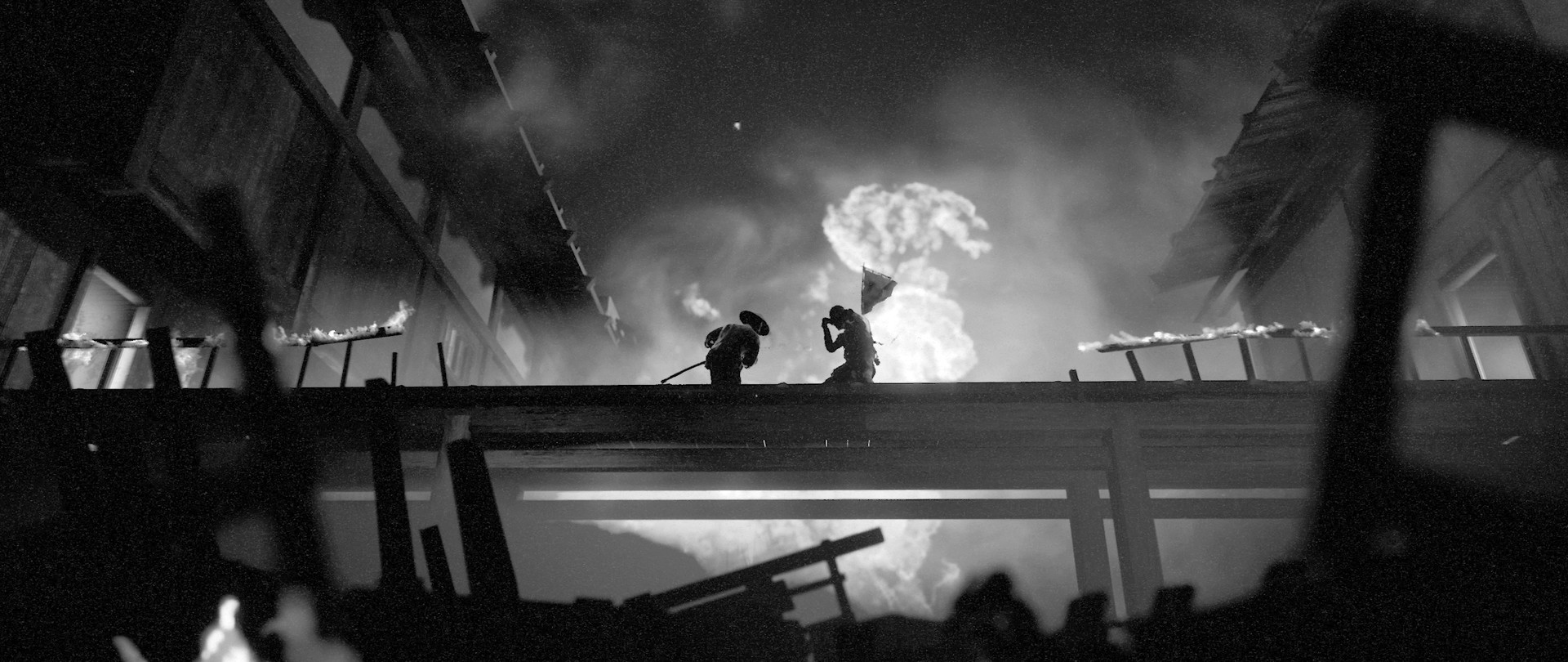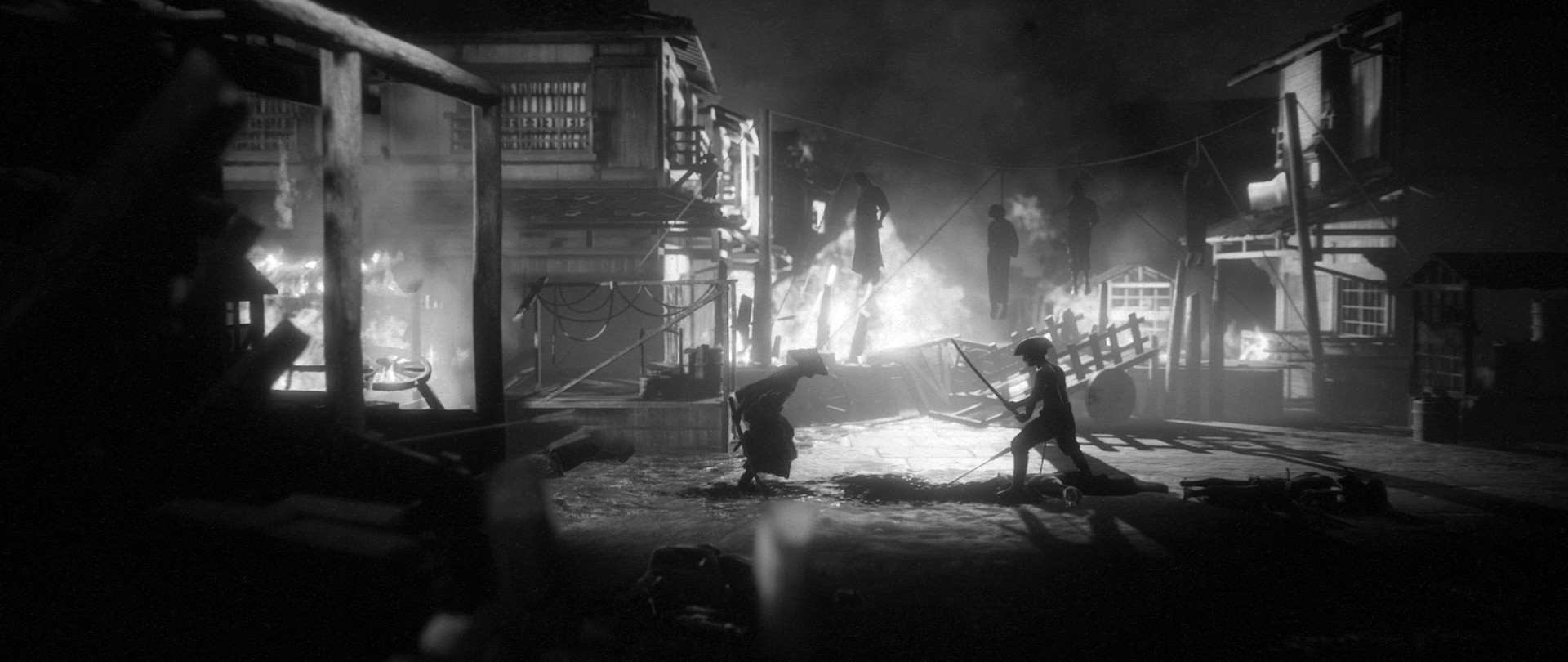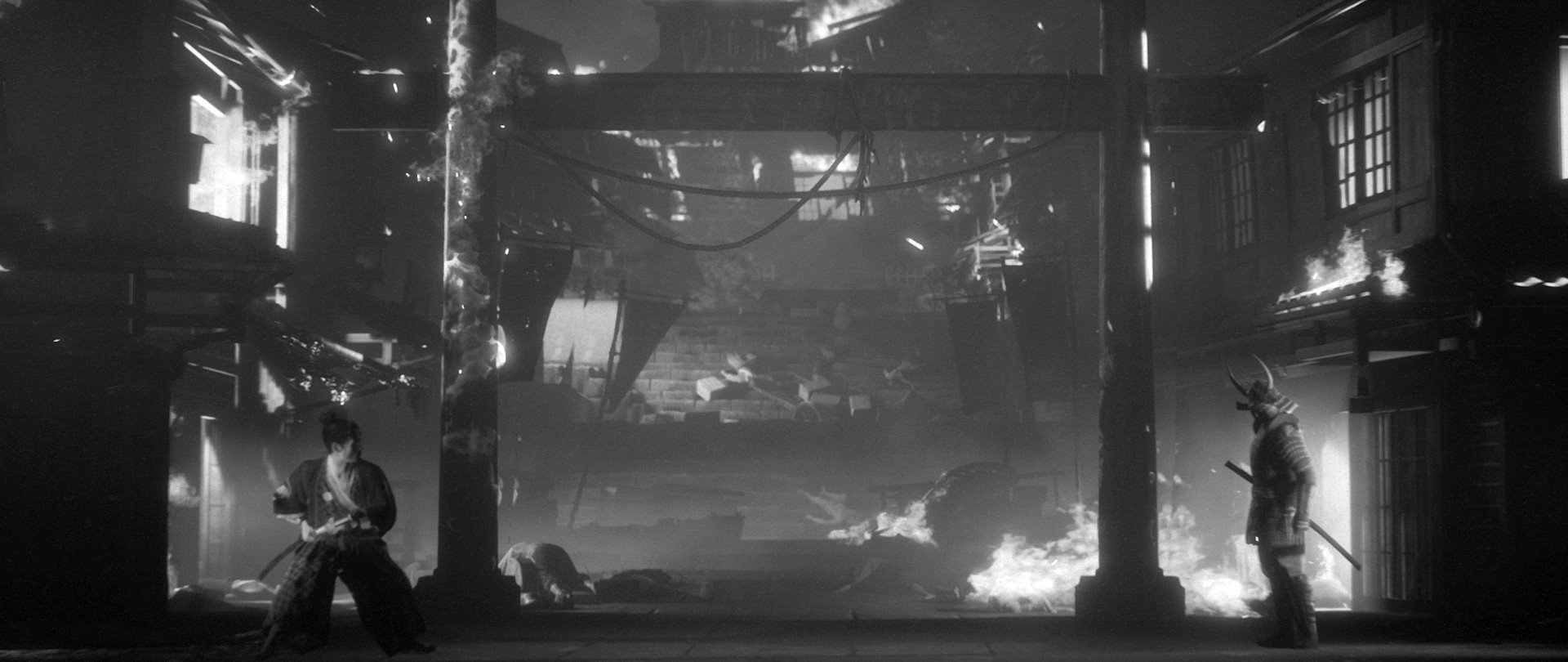
I have been waiting for a game to fill the samurai-shaped void that “Ghost of Tsushima” had left, and after having the chance to play “Trek to Yomi,” developed by Leonard Menchiari with Flying Wild Hog, I was left pleasantly satisfied. This side-scrolling, black and white katana-wielding adventure has so much heart and charm that you will not want to put it down.
The story opens with our hero, Hiroki, training as a child with his sensei, Sanjuro. The village is suddenly under siege and Hiroki and the sensei’s daughter, Aiko, follow the destruction to assist. Years later, the past siege still haunts Hiroki as a great war is once again on his doorstep. This time though, Hiroki is no longer a boy and he is definitely ready and waiting to prove himself. His trek to Yomi, if you research into Japanese lore, is actually a tale of love and death as ‘Yomi’ refers to the land of the dead, the afterlife.
As cliche and tropey as these types of revengeful samurai stories are and it is quite that in the beginning, once you peel the initial layer off it is actually quite a different story. In saying that, don’t we just love a traditional samurai story, especially with a mythological twist when presented in a classic Japanese arthouse style? You can’t help but eat it up over and over again as you bathe in these Japanese cultural elements all married together.

It was good to see there are four levels of difficulties so you can enjoy the story or go in focused on the gameplay. Throughout the chapters, Hiroki is able to use a basic lunge stab with his katana from overhead and below and a heavy sweeping blow, however, as you progress more and more combos are opened up to you. A parry is a must in sword combat and shurikens, bow and arrows and eventually, a blunderbuss-like gun makes sure you can keep some enemies at length.
The gameplay is mostly solid but at times I find the parry slow to register thus letting the enemies get in some cheap shots. There are also some slight puzzles if you want to call them that but they are way too easy and basically only work as locks to doors.
Collectibles and objectives glow white against the grey tones of the environments. These, while having no real use or value, provided a beautiful explanation of where they fit into Japanese culture. The game utilised A LOT of creative and cinematic angles to enhance the gameplay as it moves between the background to the foreground, or from running far away into the front of the screen. It is executed and layered with stunning finesse, keeping this side scroller more than a running camera.

The game itself is gorgeous visually from the very start menu on boot up. As mentioned previously, the game is completely black and white and draped in grey scales tones. It is grainy like an old vintage Japanese film; an aesthetic that is admired by cinematographers through the ages. On the rare chance this isn’t your thing though, there are options to turn the Grain and Bloom filters off. Some fight scenes are even played out through the clever use of shadows, and the rain reflects through the puddles effortlessly, a hard feat but done to perfection. The visuals and stylings are very intricate and obviously a priority in the production process and should be commended.
The sound department has also impressed, with traditional pan flutes and lutes fluttering in the menus and hard-hitting and impactful environmental sounds such as war drums or heart-wrenching screams, pounding home the direness of the situations. When you couple both the graphics and the sound production it can be an overstimulation of the senses that the gameplay can feel like it isn’t keeping up with the drama.
There are some conversations to listen in on or around NPCs at the beginning but sadly these wane off as you explore further into the chapters. This hurts as it was really a world builder in the preview of the game. The voice acting, while not too present until cut scenes, is fairly decent and believable in the sense that this was an olden Japanese movie. The interactions with sensei Sanjuro feels authentic enough, commanding the attention of the younger Hiroki, but not cheesy enough to be a classic dubbed over film.

I do wish the subtitles would stay up longer as at times I missed some dialogue when distracted or too many things were happening all at once. I also feel that while the environments are gorgeous, the character models other than Hiroki in cutscenes up-close feel a bit lacklustre and overshadowed.
Whilst the game is stunning and I lapped up everything it had to offer in almost a one-day sitting, I can’t help but be underwhelmed with the grunt-like enemies. While the boss fights are a challenge and the characters, themselves, look amazing, the general fights with them and the mundane ghosts and samurai do start to get monotonous.
Overall, ‘Trek to Yomi’ is one of my favourite Indie titles so far this year steeped in lore and samurai, katana-wielding fun. Albeit a short story, no doubt you too will be engrossed in its old school arthouse Japanese cinematography and side-scrolling slashing as your drag yourself out of Yomi to kiss sweet vengeance waiting for you on the other side.

The Good
- lore swept narrative
- Multiple levels of difficulty
- Combos and skills
- Creative camera angles
- Cultural tid bits hidden in collectibles
- Weapon range is interesting
- Beautifully designed graphics
- Impactful sound production
The Bad
- Lacks real interaction with NPCs
- Close ups of characters are not as gorgeous as the environments
- General grunt enemies underwhelming
- Boring lock puzzles








